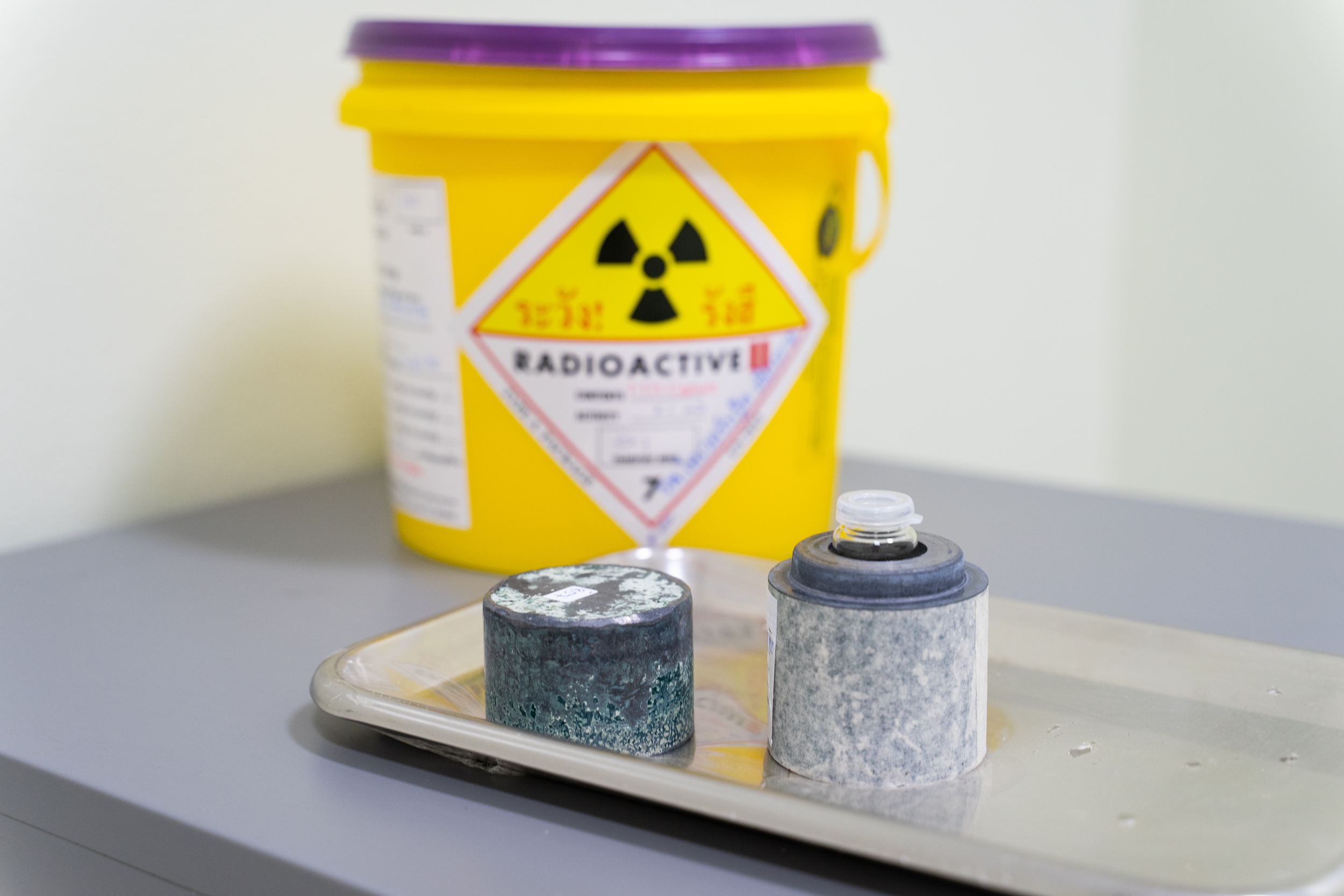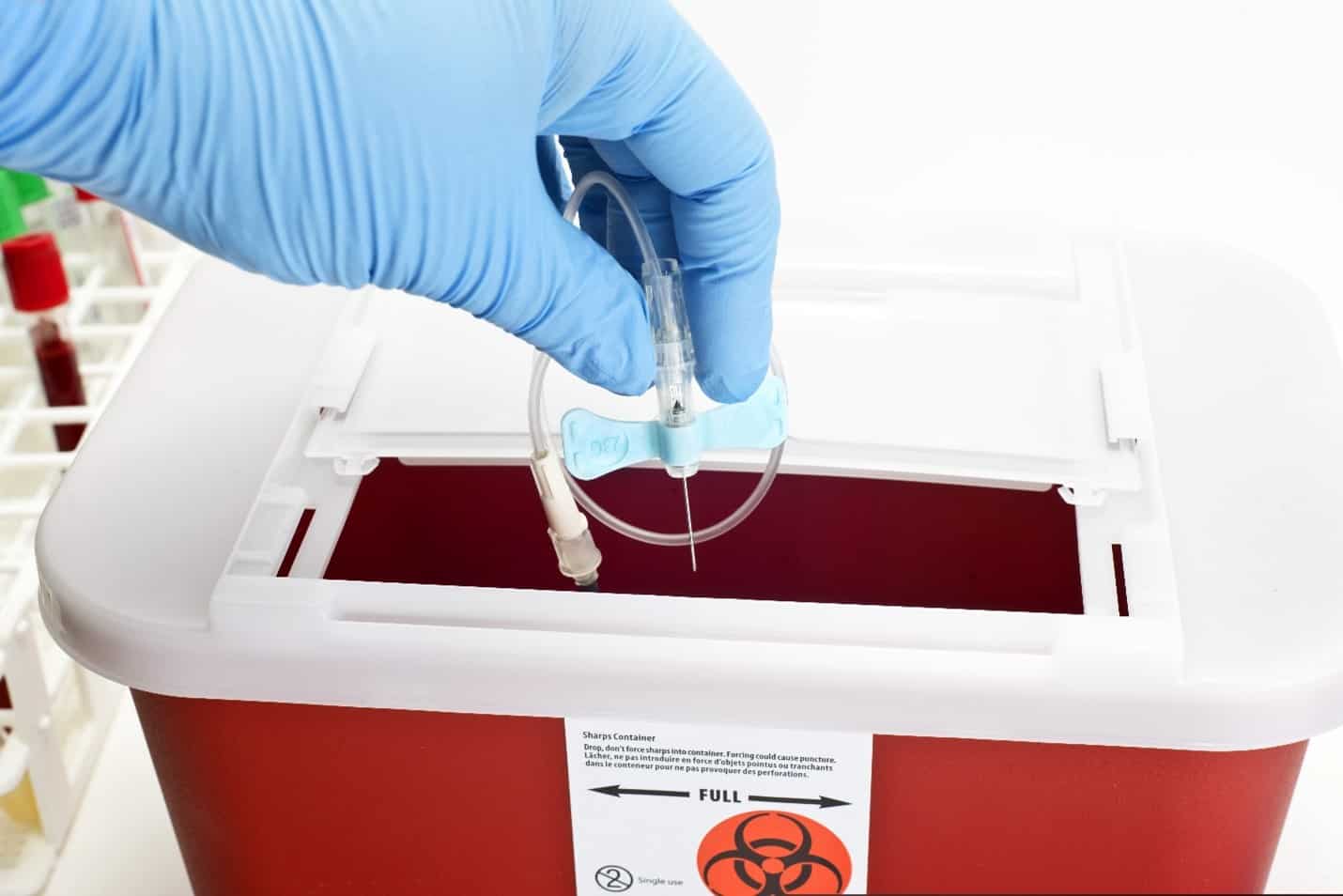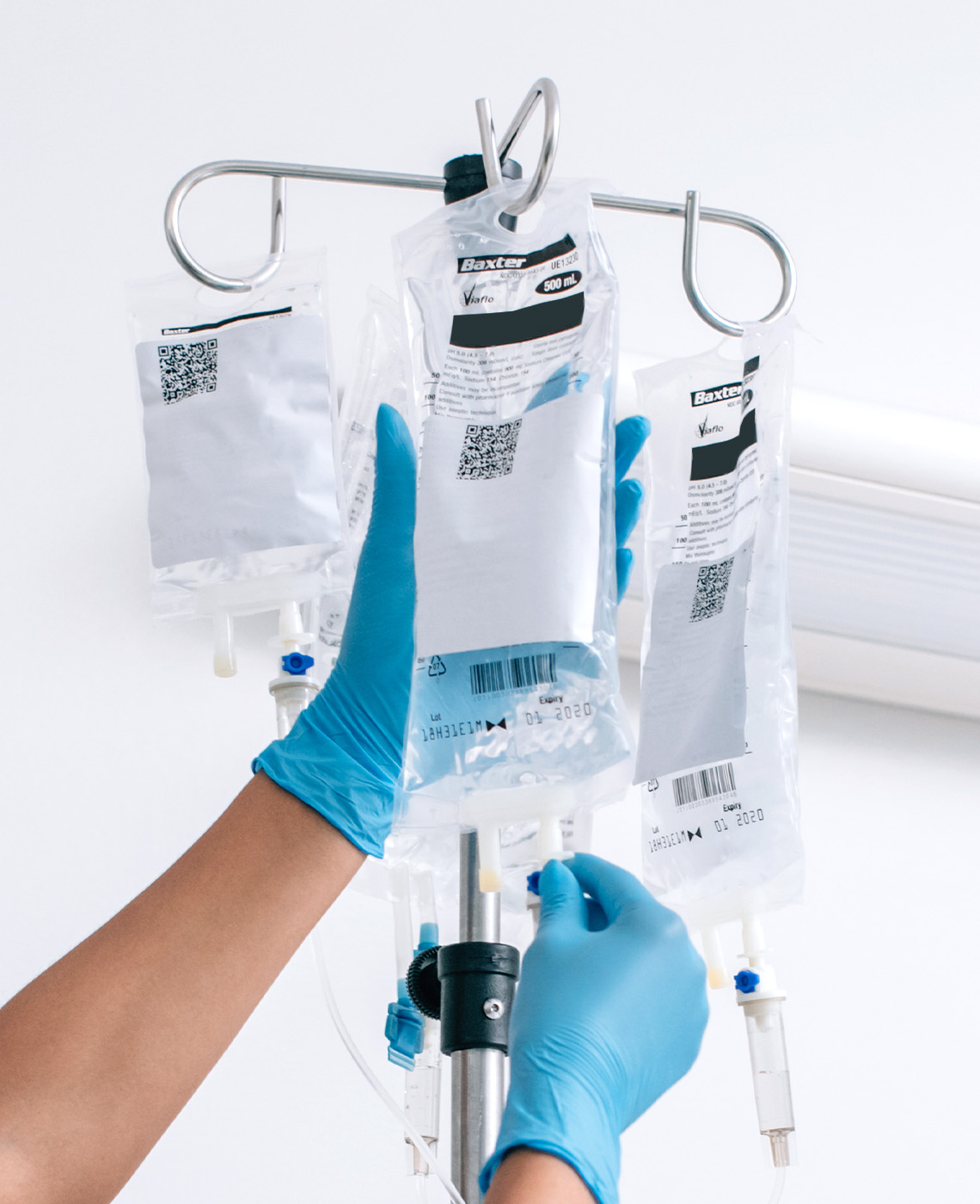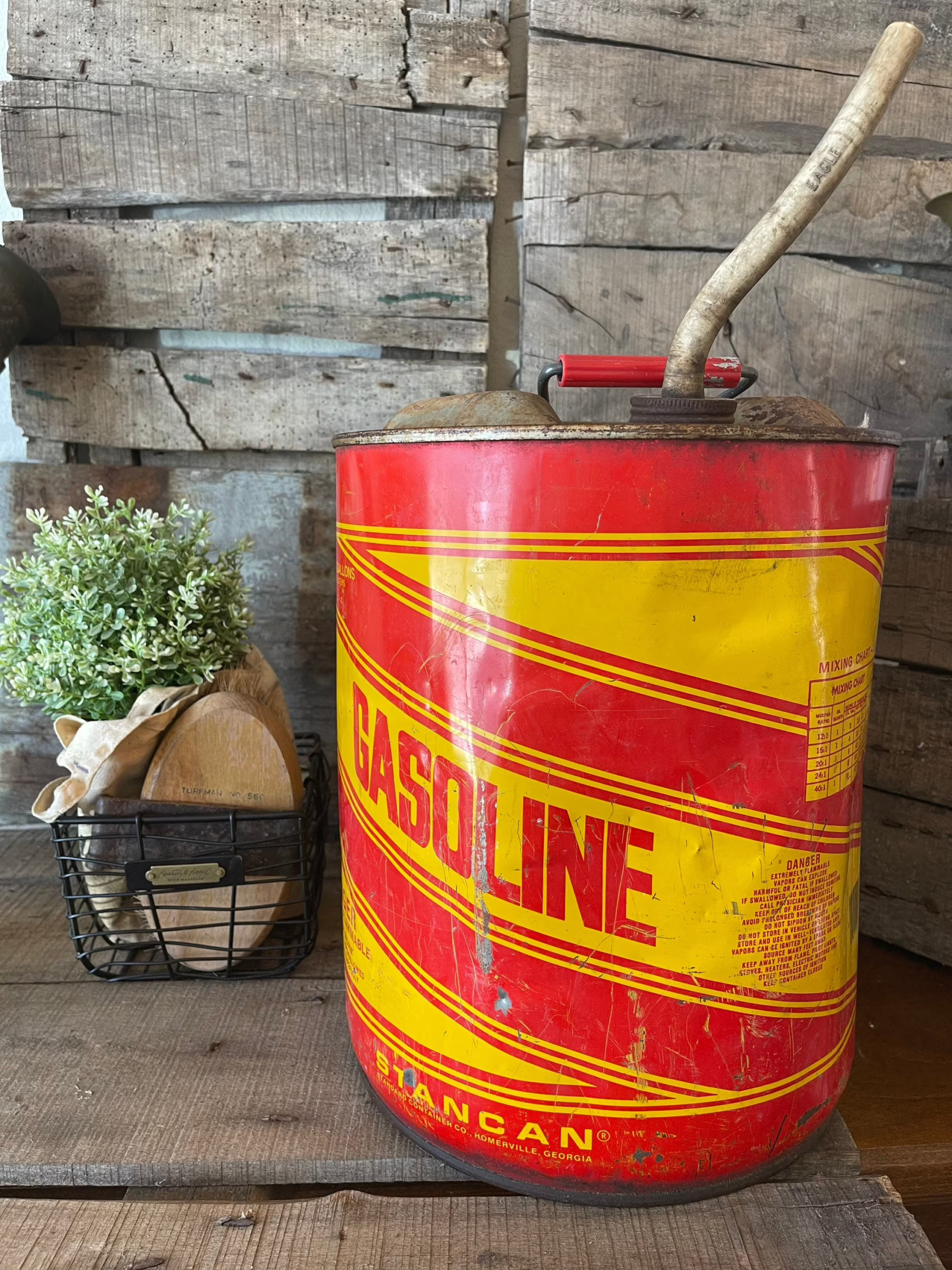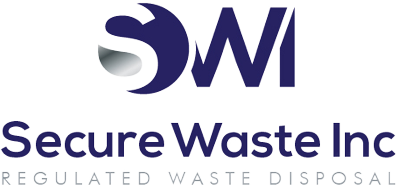Step-by-Step Guide to Managing Radioactive Medical Waste in Healthcare. Expert Solutions From Secure Waste
Secure Waste explains that Radioactive waste management in healthcare is a critical topic, particularly regarding the practices used in hospitals to handle nuclear medicine and radiotherapy waste. Facilities worldwide implement thorough procedures to ensure this type of waste’s safe management and disposal.
Hospitals generate radioactive waste through various nuclear medicine and therapy procedures. Effective strategies address this, including proper segregation of waste types, secure storage solutions, and decay methods.
Additionally, healthcare institutions adhere to stringent regulations governing the handling of radioactive materials, prioritizing public health and environmental safety. Hospitals can manage radioactive waste effectively and responsibly by following these rigorous protocols.
Introduction
Radioactive materials play a vital role in modern medicine – from diagnostic imaging to cancer treatments – but they also create a dangerous by-product: radioactive medical waste. Healthcare facilities must manage this waste carefully to shield patients, staff, the public, and the environment from harmful radiation exposure.
How does healthcare manage radioactive waste safely and in compliance with regulations? In this comprehensive guide, we explore the sources of radioactive waste in healthcare, the types and classifications of this waste, and the global best practices for handling, storage, and disposal.
We also discuss the regulatory frameworks that govern radioactive waste management and how healthcare providers ensure radiation safety at every step. By understanding and implementing these practices, hospitals and clinics worldwide can minimize risks and maintain a safe environment for everyone.

What Is Radioactive Medical Waste?
Radioactive Waste is any material from medical facilities that contains or is contaminated by radioactive isotopes, making it hazardous due to its emission of ionizing radiation.
Radioactive particles can pose serious risks to human health and the environment if not adequately managed. Radioactive medical waste is generated using radioactive materials in medicine, such as nuclear medicine, radiology, and radiation therapy procedures.
A defining feature of radioactive waste is the concept of half-life – the time required for half of the radioactive atoms in a substance to decay.
Different radioactive isotopes have widely varying half-lives, from mere minutes to many years. Isotopes used in healthcare (Fluorine-18 or Iodine-131) often have short half-lives (minutes to days), meaning their radioactivity diminishes relatively quickly.
This is by design, as short-lived isotopes limit radiation exposure to patients and make waste more straightforward to manage. However, some sources (like certain implants or equipment) may involve longer-lived isotopes that remain radioactive for years. The material must be handled as hazardous waste until it decays safely.
In summary, radioactive medical waste is considered hazardous because it emits radiation. Proper identification and segregation of such waste is essential in any healthcare setting that uses radioactive materials.
The goal is to prevent unintentional exposure and contain the radioactivity until it naturally decreases or a hazardous waste management company like Secure Waste safely disposes of the waste.
Sources of Radioactive Waste in Healthcare
Radioactive Waste in healthcare arises from various standard medical procedures and activities. Key sources include:
- Nuclear Medicine Procedures: Diagnostic tests (like PET scans or nuclear cardiology tests) and therapeutic procedures (such as radioisotope therapy for cancer) use radioactive tracers or materials.
These procedures generate waste such as used syringes, IV lines, gloves, and vials contaminated with radioactive isotopes. Even the patients’ excreta (urine, blood, etc.) after a nuclear medicine treatment can contain residual radioactivity and must be treated as radioactive waste until safe levels are reached. - Radiation Oncology: In radiation therapy for cancer, especially brachytherapy, small radioactive seeds or sources are placed in or near tumors. After their use, any unused or removed radioactive sources, applicators, and potentially patient dressings or bedding could be radioactive. Materials used to protect or treat the patient (gowns, catheter tubes, etc.) might also be contaminated.
- Diagnostic Imaging Equipment: Certain imaging devices and radiopharmaceuticals used for diagnostics contain radioactive components. For example, Technetium-99m generators (for nuclear scans) produce spent radioactive materials. When decommissioned, old equipment like cobalt-60 teletherapy machines or X-ray machine components can also become radioactive waste.
- Laboratories and Research: Hospitals and research labs that handle radionuclides for in-vitro diagnostics or medical research generate radioactive residues, contaminated glassware, and absorbent materials. Any spills or cleanup materials from these labs also become radioactive waste.
- Pathology and Surgery: It may be surprising, but even biological materials (pathological waste) can be radioactive. Tissues, organs, or body parts removed from patients who have received radioactive tracers or therapy can themselves emit radiation. For example, if a patient undergoes surgery after receiving a radioactive treatment, the excised tissue and any blood or fluids could be considered radioactive pathological waste.
These materials require special handling and often incineration or extended decay storage to ensure they no longer pose a hazard.
The radiation oncology and nuclear medicine departments are the primary radioactive waste generators in a hospital environment. However, any location in a healthcare facility (such as patient rooms or operating rooms) can temporarily generate radioactive waste if patients have been administered radioactive substances. Thus, all staff – from medical technologists to nurses and cleaning crews – must know how to identify and handle items marked as radioactive.
Classification of Radioactive Healthcare Waste
Radioactive healthcare waste can take many forms, and it is generally classified by both its physical nature and its level of radioactivity:
- Solid radioactive Waste: This includes contaminated items such as needles, syringes, gloves, gowns, tubing, glass vials, absorbent pads, paper towels, and lab consumables that have come into contact with radioactive materials. Once these everyday items are contaminated, they are treated as radioactive waste even if they look ordinary. Solid Waste can also include sealed sources used in treatments or calibration that are no longer needed.
- Liquid radioactive Waste: Examples are patients’ urine or blood containing radioactive tracers, liquid scintillation counting residues from labs, or any water used to rinse radioactive spills. Liquids may need containment (like storage in shielded tanks) until the radioactivity decays or until they can be safely released per regulatory limits.
- Biological radioactive Waste: Tissues, organs, or other biological materials that contain radioactive substances fall under this category. This could result from surgeries on patients treated with radionuclides or lab research on radioactive markers in biological specimens. Such waste is radioactive and biohazardous, requiring radiation and infection control precautions.
- Mixed Waste: When radioactive Waste contains other hazardous components (chemical or biohazard), it is termed mixed Waste. An example might be a radioactive lab solvent that is also chemically toxic or an anatomical specimen in a preservative solution that contains radioisotopes. Mixed wastes are particularly challenging to dispose of, as their disposal must meet both radioactive waste regulations and hazardous waste regulations.
In terms of radioactivity level, radioactive Waste is commonly classified into three broad categories:
- Low-Level Waste (LLW): This is the bulk of hospital radioactive waste generated. LLW contains only small or “minimal” concentrations of radionuclides. It includes most of the items from nuclear medicine and radiology (contaminated gloves, gowns, syringes, etc.), which have short-lived radioactivity.
LLW does not require extreme shielding or cooling. In fact, in the U.S., medical radioactive waste is typically classified as low-level waste and often can be handled with less stringent protocols than high-activity Waste. LLW must be managed carefully to prevent unnecessary exposure despite its relatively low radioactivity.
Many countries allow LLW to be disposed of via licensed near-surface landfills or incineration after the radioactivity has decayed to safe levels. Notably, over 90% of all radioactive waste by volume is LLW, but it contains only around 1% of the total radioactivity, highlighting that most of what hospitals generate is not highly radioactive. - Intermediate-Level Waste (ILW): This category has higher radioactivity than LLW and may require shielding during handling and storage. ILW is less common in healthcare but can include things like used radioisotope generators, specific radiation therapy sources, or large volumes of contaminated materials from extensive procedures.
ILW often cannot be disposed of in regular LLW facilities; it might need specialized containment (like solidification in concrete or bitumen) and interim storage. Eventually, ILW is often destined for engineered repositories that provide greater isolation. Globally, ILW represents a small fraction of medical waste, as hospitals usually avoid using materials that would create significant intermediate-level waste. - High-Level Waste (HLW): In the context of healthcare, true HLW is rare. HLW is highly radioactive and generates significant heat, requiring cooling and heavy shielding.
The prime example of HLW is spent nuclear fuel from reactors – something hospitals don’t produce. However, a hospital might encounter sealed sources or old radiation therapy units (like cobalt-60 teletherapy sources) that are so radioactive they approach the HLW category.
Disposing such sources usually involves returning them to the manufacturer or transferring them to a national radioactive waste repository. Deep geological disposal is the ultimate solution for HLW, involving burying the waste in stable underground geological formations. While hospital waste rarely needs this level of disposal, it’s essential to know that any extremely high-activity sources must be handled in coordination with national nuclear waste authorities for safe long-term isolation.
Understanding these types and classifications helps healthcare facilities determine the appropriate handling and disposal route for each waste item. The guiding principle is to segregate Waste based on its category and radioactivity level at the source.
By sorting Waste into the proper containers (for example, separate bins for short-lived isotopes vs. longer-lived ones), hospitals can minimize the Waste requiring heavy controls and ensure each type goes to the correct disposal stream.
Disposal Methods for Radioactive Medical Waste
Disposing radioactive medical waste is a carefully controlled process that must comply with environmental and public health regulations. Unlike regular trash, radioactive waste cannot simply be thrown away; it requires treatment or special facilities to neutralize or isolate its hazardous nature. The appropriate disposal method depends on the type and level of radioactivity of the Waste:
- Decay-In-Storage (Delay and Decay): As mentioned, many hospitals take advantage of the short half-life of medical isotopes by storing Waste securely on-site until its radioactivity has decayed to negligible levels.
After sufficient time (often calculated as 10 half-lives of the material), the waste is surveyed with radiation detectors. If the radiation is indistinguishable from background levels, the Waste can be reclassified as non-radioactive.
At that point, it can be disposed of as regular biomedical waste (incinerated or sent to a sanitary landfill) without radiological hazard. Decay-in-storage is cost-effective and straightforward for waste containing short-lived isotopes like Tc-99m, I-131, or F-18, which are commonly used in hospitals. - Incineration: Incineration is a disposal method used for particular low-level radioactive wastes, particularly those that are also biological or pathological (like tissues or contaminated sharps).
A specialized incinerator can burn the waste at high temperatures, destroying biological hazards and reducing the material’s volume. The remaining ash, however, may still contain radioactive elements concentrated from the burning process, so that ash must be handled as radioactive and often solidified and disposed of in a suitable landfill.
Many countries strictly regulate or limit the incineration of radioactive waste to ensure that radioactive emissions (via smoke) are below safe limits. Hospitals without their incinerators will typically send pathological radioactive waste to licensed facilities that have both incineration capability and radiological controls. - Landfill Burial (Near-Surface Disposal): For low-level Waste that cannot be decayed to trivial levels, disposal in a licensed low-level radioactive waste landfill is standard. These land disposal facilities are engineered with barriers and monitoring systems to contain radioactivity.
Drums or containers of waste are buried and covered with soil or concrete. Over time, the Waste’s radioactivity continues to decline in place. Many regions have designated low-level waste disposal sites that accept Waste from hospitals, research institutes, and industry.
For example, some countries have national repositories where hospitals ship their radioactive waste for burial once it’s packaged and approved for disposal. These facilities ensure that even long-lived low-level Waste (like Carbon-14 or Tritium in some cases) is isolated from the environment. - Return to Manufacturer/Supplier: Some sealed sources or radiopharmaceutical vials are managed through a take-back program. The supplier who provided the radioactive material may accept returns of spent or unused sources.
For instance, the manufacturer of a brachytherapy seed might take back expired seeds for proper disposal. This is often true for short-lived therapeutic isotopes in special generators or devices. Once decayed or used, the device (with any remaining radioactivity) is shipped back to the company, ensuring its safe disposal or recycling. - Intermediate and High-Level Waste Disposal: In the rare cases where a hospital has intermediate or high-activity Waste (such as a cobalt teletherapy source, old radium needles, or specific long-lived therapy sources), disposal is more complex.
Often, the hospital must work with the national nuclear regulatory body to transfer the material to a high-level waste storage facility or a secure interim storage facility. Ultimately, deep geological disposal is considered the safest solution for high-level waste – this involves placing the waste deep underground in a geologically stable formation, where it will remain isolated for thousands of years.
While medical waste rarely requires this, some countries include high-activity medical sources in their geological repository programs to ensure nothing is unmanaged.
It’s important to note that incineration and compaction, once traditional methods for volume reduction, are used less frequently today for radioactive waste because of environmental concerns. The preferred approach is often delay and decay, especially for short-lived isotopes, as this naturally eliminates the radioactivity hazard. For Waste that cannot decay away quickly (e.g., long-lived isotopes), secure containment and specialized disposal facilities are the norm.
Each country has regulations that dictate which methods are allowed or preferred. For example, in the United States, facilities must adhere to Nuclear Regulatory Commission (NRC) or Agreement State regulations on disposing of each class of radioactive waste.
In Europe, directives and national laws similarly control the transfer of radioactive waste to repositories. The common goal worldwide is to ensure that no radioactive waste is casually released into the regular trash or environment. It must either be rendered non-radioactive through decay or be isolated safely until time and physics neutralize its danger.
Regulations and Compliance in Radioactive Waste Management
Radioactive waste management in healthcare is subject to some of the most stringent regulations in the waste management sector, for good reason. Governments and international agencies recognize that improper handling of radioactive materials could lead to contamination incidents or health hazards. Therefore, a framework of laws, licenses, and guidelines exists to make sure hospitals handle radioactive waste responsibly.
Regulatory bodies: The exact authorities vary by country:
- In the United States, the U.S. Nuclear Regulatory Commission (NRC) (or state radiation control agencies in NRC Agreement States) oversees the use of radioactive materials in medicine, including waste disposal. The Environmental Protection Agency (EPA) sets environmental standards, and agencies like the Department of Transportation regulate how radioactive waste is transported on public roads.
- In other countries, a specific national radiation safety authority (such as the Canadian Nuclear Safety Commission, the UK Environment Agency, the Health Security Agency, etc.) may issue licenses and rules.
- Internationally, organizations like the International Atomic Energy Agency (IAEA) and the World Health Organization (WHO) provide guidance and recommended standards for managing radioactive waste from medical uses. The IAEA’s Safety Standards and publications (e.g., IAEA SSR-5 for radioactive waste disposal) outline principles many national regulators adopt.
Licensing and plans: Healthcare facilities must usually obtain a license or permit to use radioactive materials, and that license includes provisions for waste management. Before a hospital can acquire a specific radioisotope for clinical use, it must demonstrate that proper waste handling procedures are in place.
Many jurisdictions require the hospital to have a documented Radioactive Waste Management Plan as part of its radiation safety program. This plan covers how the facility will segregate, store, treat, and dispose of radioactive waste, as well as how it will train staff and monitor compliance.
Record-keeping: Meticulous records are a non-negotiable part of compliance. Hospitals must maintain records of all radioactive materials received, used, and disposed of.
For Waste, this means keeping logs of each waste container, its contents (isotopes and estimated activity), the date it was stored, and its final disposition (e.g., “decayed in storage until XX date, then transferred to landfill Y” or “shipped to disposal facility Z on date”). Regulatory inspectors will review these records to ensure no radioactive material is unaccounted for. Personnel training records, waste area radiation surveys, and any incident (like a spill) must also be kept.
By following these regulations and embedding them in hospital policy, healthcare providers ensure legal compliance and the safety of their staff, patients, and community. It creates a culture of safety and accountability around using lifesaving radioactive materials.
Ensuring Radiation Safety and Training in Hospitals
Radiation safety is a core component of any healthcare radioactive waste program. Beyond the physical handling protocols and regulatory checkboxes, it fosters an environment where staff are knowledgeable, vigilant, and prepared. Key elements to ensure ongoing safety include training, personnel monitoring, and emergency preparedness:
- Staff Training and Education: All healthcare workers who might come into contact with radioactive materials or Waste need comprehensive training. This includes doctors, nurses, technologists, lab personnel, housekeeping, and security staff. Training covers proper waste segregation, how to read warning labels, using PPE, what to do in case of a spill, and the health risks of improper handling.
Regular refresher courses keep everyone updated on procedures and any regulatory changes. Many facilities incorporate radiation safety training into annual competency assessments. A well-trained staff is the first line of defense against accidents. - Radiation Safety Officer (RSO): As noted earlier, the RSO is typically the point person for radiation safety. This individual (often a medical physicist or health physicist by background) ensures that all protocols are followed and is available to answer staff questions or concerns.
The RSO conducts audits, manages the waste inventory, and liaises with regulators during inspections. They also investigate unusual incidents, like a missing piece of radioactive waste or a higher-than-expected reading on a dosimeter, to implement corrective actions. - Personnel Monitoring: People who work with or around radioactive waste are usually enrolled in a dosimetry program. They wear dosimeter badges (or rings) that measure cumulative radiation dose. These are sent for analysis monthly or quarterly.
If any worker’s dose approaches investigation levels, the RSO will review work practices to reduce exposure. Fortunately, with proper waste handling and shielding, doses from medical waste work are generally very low. Still, monitoring ensures that no individual is unknowingly receiving excessive exposure, and it reinforces the ALARA practice by making people aware of their dose numbers.
By investing in training and safety measures, healthcare facilities demonstrate that the benefits of nuclear medicine and radiotherapy can be delivered without compromising safety. When workers handle radioactive waste confidently and correctly, patients and the public can likewise be confident that there is no undue risk from these medical advances.
Conclusion
Managing radioactive waste in healthcare is a critical responsibility that combines scientific understanding, meticulous procedures, and strict adherence to regulations. From the moment a radioactive material is used in a patient’s care, the clock starts ticking to ensure that every bit of resultant waste is handled safely and efficiently.
We have seen that most radioactive medical waste is low-level and short-lived, which means hospitals can effectively neutralize much of the danger before final disposal with proper segregation, storage for decay, and documentation. For wastes that remain radioactive longer, specialized disposal pathways like licensed landfills or returns to suppliers are in place to protect the public and the environment.
Global best practices – guided by agencies such as the IAEA, WHO, and national regulators – stress the importance of a comprehensive waste management plan that covers training, handling protocols, and emergency preparedness. By following the principles of radiation safety (time, distance, shielding, and ALARA) and maintaining rigorous compliance (licenses, records, and inspections), healthcare facilities can greatly minimize any radiation risks.
In the end, the successful management of radioactive waste in healthcare ensures that safety hazards do not overshadow the life-saving benefits of nuclear medicine and radiation therapy.
It protects hospital staff who use these materials daily, safeguards patients and visitors, and prevents environmental contamination beyond the hospital’s walls. As medical technology evolves, responsibly handling radioactive substances will remain a cornerstone of hospital waste management.
With knowledge, vigilance, and the right partners in waste disposal, healthcare providers can focus on healing patients, knowing that their radioactive waste is controlled and compliant with all safety standards.
Secure Waste: Your Partner in Safe Medical Waste Disposal
Proper radioactive waste management is not just a legal obligation – it’s a moral imperative to ensure public safety. Expert support can benefit healthcare facilities looking to strengthen their waste management programs.
Secure Waste is a trusted provider of medical and hazardous waste disposal services with decades of experience in compliant healthcare waste management.
Our team stays up-to-date with all federal and state regulations, and we offer tailored solutions for handling even complex waste streams, including radioactive and mixed wastes. We prioritize safety, cost-effectiveness, and reliability in every service we provide.
Would you be ready to enhance your facility’s radioactive waste management? Secure Waste can help you implement best practices for segregation, documentation, and disposal to keep your staff and community safe. Contact Secure Waste today at 877-633-7328 or visit our website at securewaste.net for a free consultation and to learn how we can help with all your medical waste disposal needs. Let us partner with you to ensure your healthcare practice meets all radioactive waste regulations and sets the standard for safety and compliance in your region.

Expert Medical Waste Management: With over 25 years of industry experience, Secure Waste is a trusted local leader in hazardous and biohazardous waste disposal across Maryland, Virginia, and Washington, D.C. Specializing in medical waste management, sharps needle disposal, and biohazard waste removal, the company ensures full compliance with federal, state, and local regulations while prioritizing environmental sustainability.
The company also offers additional services, including secure document shredding and sharps container sales, providing comprehensive solutions for healthcare facilities and businesses. Our cost-effective services help clients maintain regulatory compliance without unexpected costs.
With a commitment to customer satisfaction, Secure Waste offers tailored waste management plans that align with industry best practices. Their team of experts provides reliable, timely, and compliant services, making them the preferred choice for medical waste disposal. For a free waste quote or more information, visit www.securewaste.net
